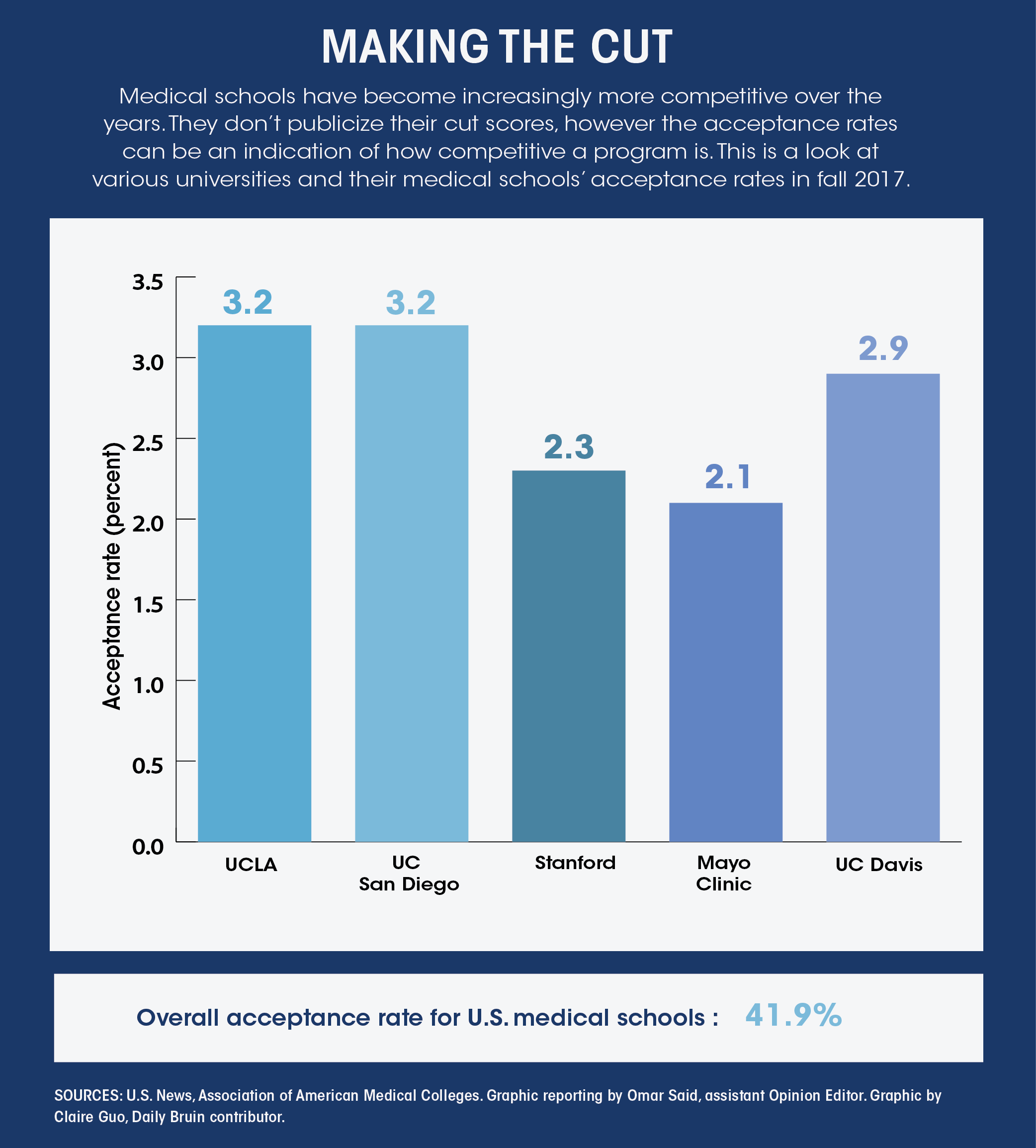School of Medicine must be transparent about raised admission thresholds

By Ankita Nair
Feb. 21, 2019 12:01 p.m.
Applying to medical school is the apex of any pre-medical student’s journey.
But for some students, it’s possible their efforts may not even be considered.
The Daily Bruin reported in January that the David Geffen School of Medicine is raising its admission thresholds to a minimum 3.4 math and science GPA and a minimum 512 score on the MCAT, a score at the 88th percentile. This information about raised requirements was only made public through a leaked document written by medical students who opposed the cutoffs because they would adversely affect underrepresented minorities.
While UCLA neither confirmed nor denied if it uses cutoffs, this news is shocking considering most medical schools state they evaluate applicants holistically, considering factors such as life experiences, clinical experience and extracurricular activities. The Association of American Medical Colleges said in a statement it supports the use of holistic review in admissions to support a diverse medical workforce capable of handling the many needs of the health care industry. Similarly, medical schools like those at UC San Francisco and UC San Diego said they have no rigid numerical cutoffs.
If medical schools like David Geffen truly are using cutoffs to evaluate applicants in any form, they have an obligation to be more transparent to applicants before they apply.
Understandably, this leak caused significant concern among pre-medical students who worry that, at its most extreme interpretation, the cutoff suggests UCLA would not consider medical school applicants with academic scores below these standards. A looser interpretation suggests these numbers serve more as a guideline, with the school open to considering students who demonstrate their capacity for medicine in other areas of their applications.
Despite news about the cutoffs, the school of medicine said in a statement that its review process considers a broad set of factors.
Perhaps one reason medical schools are reluctant to disclose the use of cutoffs is that they imply there are academic scores that guarantee admission.
David Wofsy, the associate dean for admissions at UCSF’s medical school, said the reality is admitting medical school applicants is not a precise science.
“There are many strengths that individuals have that appeal to us, and there isn’t a formula or template for a successful student,” Wofsy said. “Doctors contribute to society in all sorts of successful ways and we’re looking for your particular strength and what potential you have to make a difference.”
But the uncertainty of cutoff scores makes it difficult for students to make important decisions about their futures. If medical schools believe cutoffs are justified, they shouldn’t be hesitant to reveal their standards. The lack of transparency does students a disservice and makes them suspect that these schools have a sinister reason for hiding cutoffs.
Cinthiya Chander, a fourth-year biochemistry student, said it would helpful to know if medical schools have cutoffs because students often apply with hopes of getting in even if they have a low GPA and MCAT score but have strong letters of recommendation or personal statements.
“If medical schools have a set cutoff and no other component of my application will change their mind, I’d rather save my $90 application fee and focus on applying to other medical schools,” Chander said.
Applying to medical school can be an expensive process. To submit primary applications, students pay $170 for the first medical school they apply to and $39 for each additional school. It can cost $50 to $150 for each school if students are asked to submit secondary applications. If schools are unwilling to seriously consider students’ applications because their numbers don’t meet their admissions criteria, they should them know ahead of time so they don’t waste their money.
That transparency would also help pre-medical students decide if they should attend a post-baccalaureate program to boost their GPAs, retake the MCAT or spend a gap year gaining clinical experience that would help improve their applications.
Certainly, it’s possible for students to gauge if they qualify academically for specific medical schools by paying for a $28 subscription to the AAMC’s admissions database or by finding the 25th to 75th percentile GPAs and MCAT scores listed on a medical school’s website.
But while a percentile range may help students understand if they fit into an accepted class, they give them the benefit of the doubt. Applicants to schools that rely on cutoff scores, though, don’t have that benefit and those universities should be transparent about that.
The pre-medical track takes a lot of work and students jump through many hoops to present compelling applications to universities like UCLA. The least these institutions can do is let them know if their applications will be seriously considered – or tossed out after a single read.

